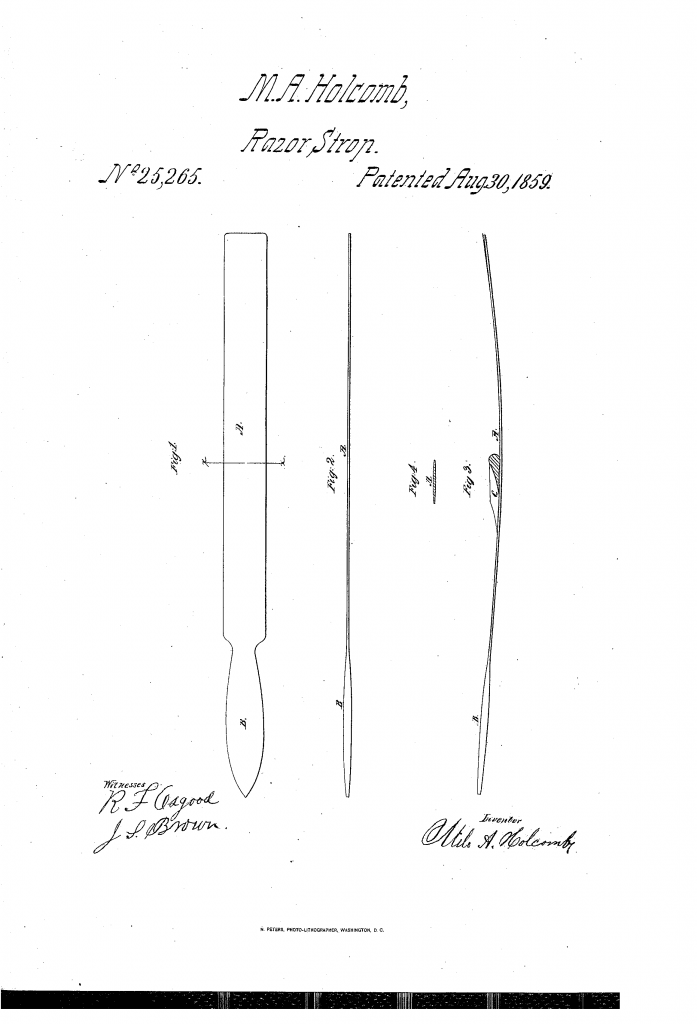A couple of years after the invention of the self-corroding metal hone, a Mr Milo A Holcomb was granted a patent for a metallic razor strop. A new and improved polished steel razor strop, to be exact. And compared to a hone what would self destroy through galvanic corrosion, it is a clear improvement.
As can be seen from the drawing, the invention was pretty simple. And the explanation in the patent text is pretty straightforward too. It explains not only how to make the metallic razor strop, but how to use it too:
I form the blade A, of hardened steel, and polish it to the highest degree. The blade is, in general, sufficiently thin to render it more or less flexible; while the handle B, may be thicker, if desired, as shown in the drawings, and may be of steel, iron, or any other convenient and suitable material. The cross section of the blade A, is generally Somewhat rounded, as shown in Fig. 4.
From US patent 25,265
The razor should first be brought to a keen edge by means of a hone, or any other instrument in common use. It is then to be applied to the polished surface of this strop till the finest and Smoothest edge is obtained. By its flexibility, the strop may be curved downward, as shown in Fig. 3, so that its surface will come into a little closer contact with the edge of the razor, than will the hone by which the razor is sharpened; and thus it effectually polishes, as it were, the very edge of the razor to the finest keenness.

The strop were to be made out of thin, flexible steel. A natural choice at the time would been a spring steel. That is a medium to high carbon steel with a high yield strength. In 1859, when the metallic razor strop was patented, this would likely been a blister or crucible steel.
I don’t use nor hone straight edge razors, so I’m a bit lacking in knowhow on how to put a keen edge on a straight. I am however not entirely convinced that running a already sharpened blade over a polished steel surface would do much good. But I’m more than happy to be corrected on that point if someone actually knows the answer.
Milo does point out that he isn’t intending for the flexible steel strop to burnish1 the razor. But his description of lessening and polishing the edge of the razor sounds very much like burnishing to me. Perhaps Milo had some way of distinguishing between burnishing and burnishing…
The patent is long expired. And since a quick search shows no stainless steel hones for sale, I would say the marked for this kind of hone has long expired too.
You can read the full text of the patent for the metallic razor strop at Google Patents.
- Burnishing; plastic deformation of a surface that makes it smoother and shinier. ↩︎

Pingback: Metallic razor strop from 1859 - Razors n Blades the shave that saves